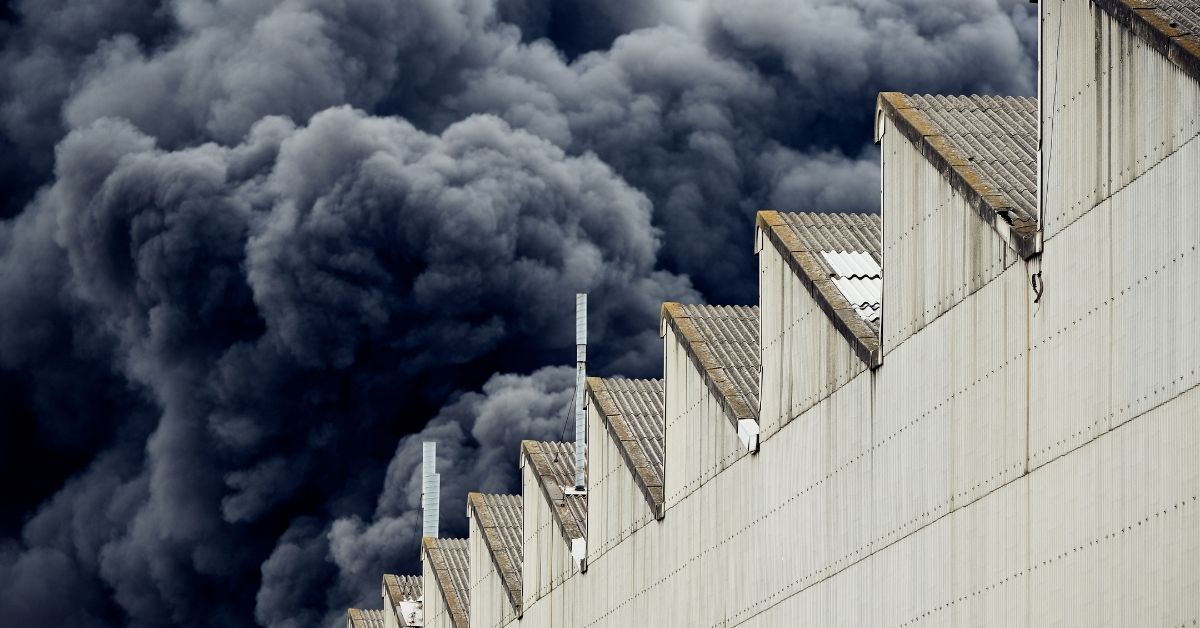As the temperature drops and we spend more time indoors, cold and flu season arrives in full force. With increased exposure to pathogens in enclosed spaces, understanding how viral load builds up in indoor air becomes critical. In this blog post, we’ll explore the dynamics of viral particles in the air, the factors that influence indoor air quality (IAQ), and some strategies for reducing airborne pathogens and other indoor pollutants during the winter months.
The Science Behind Viral Load and Airborne Transmission
A recent study published in Environmental Science & Technology (EST) by the American Chemical Society highlights the factors affecting viral particle presence in the air.1 It underscores how the density of viral particles, or viral load, increases in enclosed spaces due to factors like poor ventilation and high occupancy. Viral load, defined as the concentration of viral particles in the air, directly impacts the likelihood of infection for those in close quarters.
The study illustrates that in confined environments, exhaled particles can accumulate rapidly without sufficient ventilation. During cold and flu season, this buildup is particularly concerning since viruses like influenza, respiratory syncytial virus (RSV), and rhinoviruses (common cold) can linger in airborne droplets for extended periods. By understanding viral load in the air, we can make informed choices about how to manage IAQ and reduce the risk of respiratory infections.
Factors That Influence Indoor Air Quality in Winter
1. Ventilation and Air Circulation
Ventilation is the single most important factor in controlling viral load. Fresh air exchange dilutes airborne pathogens, yet many people close windows and seal doors during the winter to conserve heat. Without proper ventilation, indoor viral load can increase substantially, especially in spaces where multiple people gather, such as offices, schools, and homes.
2. Humidity Levels
Humidity levels also play a role in viral transmission. When air is too dry, viruses can remain airborne longer, increasing the risk of transmission. According to research, maintaining indoor humidity levels between 40-60% may help reduce the viability of viruses in the air.
3. Use of Heaters and Fireplaces
Wood-burning stoves, fireplaces, and some space heaters can release pollutants like carbon monoxide (CO), nitrogen dioxide (NO2), and particulate matter (PM2.5) into the air. These pollutants not only worsen air quality but can also exacerbate respiratory issues, making individuals more susceptible to infections.
4. Household Chemicals and Cleaning Products
During cold and flu season, people often use cleaning agents more frequently. While disinfecting surfaces is essential, many cleaning products release volatile organic compounds (VOCs) that can reduce IAQ and irritate the respiratory tract, especially in poorly ventilated spaces.

Strategies to Improve Indoor Air Quality and Reduce Viral Load
There’s no need to fear the presence of viral load in indoor air, even during cold and flu season. While it’s natural to be concerned about airborne pathogens, taking practical steps to maintain good indoor air quality (IAQ) can help mitigate these risks effectively. Simple actions outlined below reduce viral particles and pollutants indoors.
1. Increase Ventilation
Where possible, open windows or use exhaust fans to promote air exchange, even briefly. Consider using mechanical ventilation systems or air purifiers to supplement ventilation, especially in areas with high foot traffic.
2. Use Humidifiers to Maintain Optimal Humidity
Humidifiers can help maintain a balanced humidity level, reducing viral viability. Ensure that humidifiers are cleaned regularly to prevent mold and bacterial buildup.
3. Invest in High-Quality Air Purifiers
Air purifiers with high-efficiency particulate air (Certified HEPA Material) filters can trap airborne particles, including some viruses, effectively reducing viral load. Purifiers like those from Austin Air are designed to capture fine particles, VOCs, and other airborne pollutants, making them a valuable tool in managing indoor air quality.
4. Minimize Pollutant Sources Indoors
To improve IAQ, avoid burning candles, smoking indoors, and using wood stoves without adequate ventilation. Additionally, opt for environmentally friendly cleaning products with lower VOC emissions.
Simple actions like increasing ventilation, keeping humidity levels balanced, and using a quality air purifier are all ways to reduce viral particles and pollutants indoors. By focusing on these straightforward measures, you can create a healthier, more comfortable indoor environment without unnecessary worry.

Final Thoughts
The study from Environmental Science & Technology sheds light on how viral load in the air contributes to seasonal infection risks, emphasizing the importance of IAQ in protecting public health during cold and flu season. Simple steps like improving ventilation, controlling humidity, and using quality air purifiers can make a substantial difference in reducing viral load indoors.
Whether you’re preparing your home for winter guests or aiming to create a safer work environment, investing in IAQ measures can help prevent the spread of respiratory viruses and contribute to overall well-being during the colder months.
REFERENCE
1 Patel S, Sankhyan S, Boedicker EK, et al. (2020). Indoor Particulate Matter during HOMEChem: Concentrations, Size Distributions, and Exposures. Environmental Science & Technology, 54(12), 7107–7116. doi: 10.1021/acs.est.0c00740.



